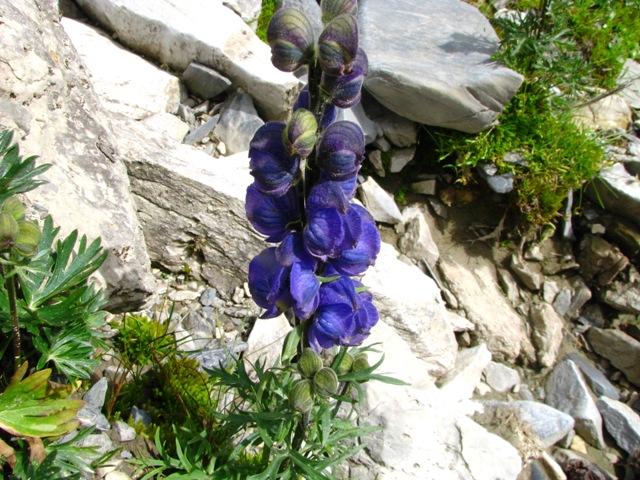Aconitum chasmanthum
(Aconitum chasmanthum)

Description
“Pet poisonous” – Toxic parts: roots, foliage and seeds Pachyphytum compactum is a flowering plant in the family Crassulaceae . This species was first described by Rose in 1911. Gaping Monkshood is a perennial herb 1-2 ft cm tall, with leafy stem. Leaves are regularly distributed, the upper leaves only slightly smaller than the lower ones. They are deeply cut, pentagonal-circular in outline, 4.2-4.8 × 4-5.6 cm, both surfaces hairless or nearly so. Central segment is rhombic, base narrowly cuneate, 3-parted nearly to base; lobes dissected; lateral segments obliquely flabellate, unequally 2-parted. Flowers are borne in racemes up to 30 cm long or longer. Flowers have a gaping open mouth, compared to other Monk's hood flowers. Sepals are blue or white with blue veins, rarely pale purple, lateral ones circular to nearly square, not contiguous with helmet. Claw of petals is 5-7 mm. Filaments are often almost hairless, winged, wings not ending in tiny teeth. Carpels are generally 5, straight, hairless or with a few hairs along the back and near the style, sometimes hairy. Follicles are oblong, 1-1.6 cm. Seeds have unequal wings. Gaping Monkshood is found in the meadows of the Himalayas, from Pakistan to Nepal, at altitudes of 2300-4300 m. Flowering: August.
Taxonomic tree:







